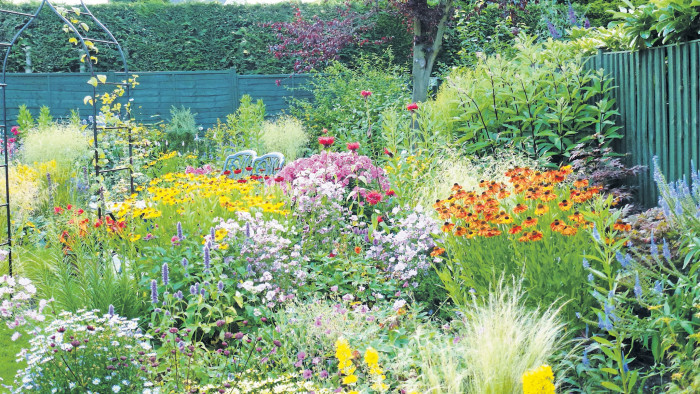How to get the best out of this year’s National Gardens Scheme


Roula Khalaf, Editor of the FT, selects her favourite stories in this weekly newsletter.
Like English cricket, English garden visiting is highly susceptible to weather. English gardens have been running on fast forward, speeded up by about 30 per cent to a point three weeks ahead of their usual calendar. The tulips are already mostly over. US visitors who have emerged from an icy east coast winter need to think in an accelerated mode. There is more than ever to be seen, visited and appreciated but owners had to fix the dates of their open days last year. The stars of their open gardens may not be those they have publicised in advance.
As ever, the essential guide is the National Garden Scheme’s The Yellow Book 2014 (£9.99 from British bookshops or at ngs.org.uk). The Prince of Wales is the scheme’s patron and writes justly in his annual preface that it exemplifies “volunteering and community service” and “constantly strikes [him] with its outstanding model for such forms of selfless service”. In short, garden openers and the NGS were representing the Big Society in action, long before that concept baffled some of us during Conservative canvassing at the last general election. Last year, more than £2.2m was given to the NGS’s chosen charities. The Big Society, meanwhile, has gone off the front page but the NGS has continued to grow. It now offers us about 3,800 gardens for visiting, teas and, sometimes, taking dogs on leads. No other country can begin to equal this scope and number. The NGS and its openers are an enduring, golden part of Team GB.
Here is what I mean by “enduring”. The scheme began in 1927 with the Queen’s Nursing Institute. It wished to raise funds for district nurses in the days before any NHS. Regular openers and visitors still talk of opening for “the nurses” but the range of charities helped by the NGS has widened over the years. District nurses were absorbed into the NHS but, outside it, the privately funded Macmillan cancer nurses sprang up and the privately funded hospice movement was soon accompanying them. Since 1985, Macmillan nurses have received more than £14m from the NGS, enabling them to fund about 150 specialised services and accompanying posts. Also outside the NHS, Marie Curie Cancer Care has received about £6m since 1996. When my back aches ominously in the late evening after a long bank holiday in the garden, I am reassured that one day I could, perhaps, be looked after by these privately funded services, relying on FT readers who have put their own backs into visiting so many gardens so much better than my own. The NGS has now also begun to help Parkinson's UK, a private charity that provides visiting nurses for those with the disease. I much like the sound, too, of its help for the charity Perennial, which “helps horticulturists who are facing difficulties”. We all are.

Fashions have always been pushed at keen gardeners. Historians can trace them neatly through past NGS Yellow Books. My 1970 edition, when I started to write for the FT, says zero about ornamental grass gardens and is not in the least soppy about “wild life”. Nobody made much of their vegetable gardens or rebranded them as “potagers”. Although there were “wild areas”, there was not a hint of the slippery term “sustainable”. Nobody was offering unmown areas of grass with much pride. There may have been “locally sourced” food in the tea room but nobody made a fuss about it. Gardens were mostly more formal unless they were havens of camellias and rhododendrons or had resorted to rampant “ground cover”.
This year’s reads rather differently. In the Walled Garden at Mells in Somerset, the owner is showing “environmentally sustainable seasonal flowers”, many of which are “English-grown” cut flowers. She is also offering pizzas from her wood-fired oven and allowing wine to be brought in “for a small corking charge”. At Michaels Folly in Epping Green, the organic kitchen garden will feature “a straw bale studio for yoga and dance” and a Mongolian yurt in which tea will be served. Such adventures were not on offer in the past.
Since 1970, openings of London gardens have proliferated, extending outwards to Treetops in Northwood whose photograph looks dreamy, depicting a “vibrant vision”. On a wider front, The Yellow Book is an invitation to visit so many of the loveliest parts of Britain, places where the “vibrancy” is not just noise and mess. Since 1970, there are so many more media prizes for competing gardens that it is fascinating to see what wins. At 2 Manvers Street in Ripley, Derbyshire, the owners describe their garden of 10 borders, 26 clematis and much else as an “awe-inspiring oasis”. I note the exact counting. The garden won the Daily Mirror cup for most inspiring garden. I have not seen it but it represents a class that anyone interested in planting and layout is strongly advised to see. The single best training for a discerning gardener and garden maker is to go round the country with The Yellow Book and see the gardens marked with a floral symbol. Even if they are a let-down, they have lessons in them. The biggest problem, I find, for new “designers” is that they simply have not seen enough in situ.

The most inspiring gardens do not have to be big. Not far from London, Benington Lordship, near Stevenage, Hertfordshire, is a seven-acre garden with a hidden double border that has long been one of my favourites (open for the NGS on June 29). Up beside the famous gardens at Hidcote, the superb privately owned gardens at Kiftsgate Court, Gloucestershire, will open for the NGS on August 11 and remain among Britain’s great gardens. They open otherwise throughout most of the year (visit kiftsgate.co.uk). On a smaller scale, gardens such as 5 Beckett Drive in Northwick, Worcester, look from the photos to be well worth the attention of any gardener with a smallish space and a love of flowers (NGS openings are June 21 and 22). I tend to find the mass openings of gardens in one village or small town are less rewarding than a single garden with a floral symbol to mark floral distinction. However, there are ideas everywhere, and it was during a collective opening that I first saw the beauty of pure white Dierama, or Venus’s Fishing Rod, growing on its own in a blank expanse of dug soil.
When visiting, please remember that the visit is not all about yourself and your own garden back home. It is a visit, not a shopping trip, although museums, exhibitions and even some gardens try so hard to make us blur the line. It is fun to go with our notebooks and jot down plants or ideas that appeal to us. The bigger question, however, is not “What is here for me, me, me?” but “If I had owned this site, what would I have done with it? Has the owner been rather good at it, perhaps without fully thinking why?”. Even if the answers are “not much” and “no”, there are always the teas, the home-made cakes and a wondrous diversity of dogs, in car parks, or on controlling leads.
Comments